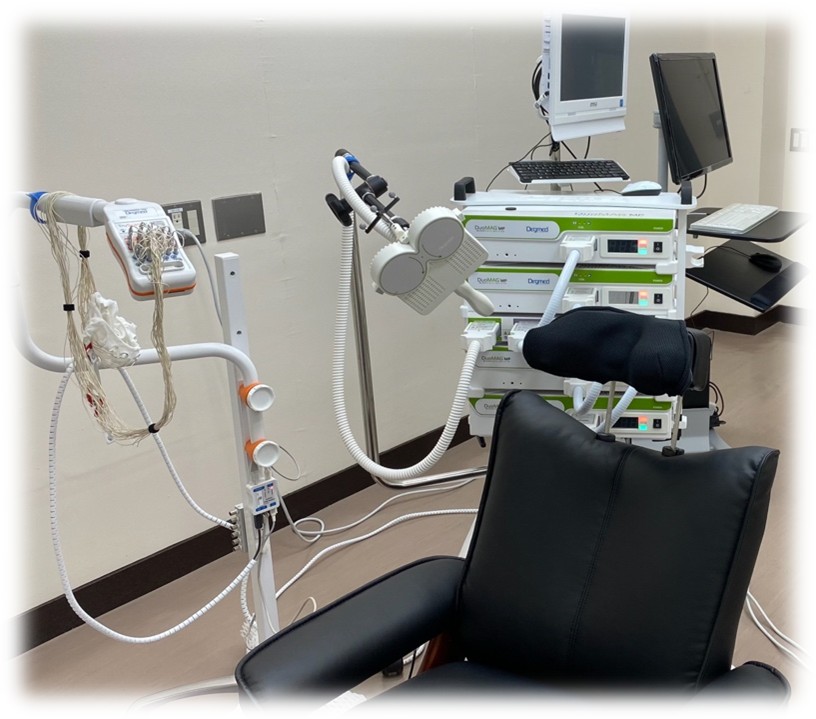
Some autistic traits related to challenges with social interaction, mental flexibility and visual perception could be alleviated through a new, noninvasive therapy. A team of researchers, including those from the University of Tokyo, found that stimulating nerve cells when the brain becomes "stuck" in a certain state improves flexibility and relieves some autistic behaviors. The procedure utilized transcranial magnetic stimulation (TMS), which is already used to treat certain mood disorders, in a novel manner. Over 40 adults with a mild form of autism participated, and the therapeutic effects lasted for up to two months after the last session. This study could contribute toward projects enabling new treatments.
The number of people diagnosed with autism spectrum disorder (ASD) has been increasing for several decades, partly due to improved testing and also understanding of this broad developmental condition. ASD can affect how a person interacts socially and with their environment to varying degrees. This can manifest particularly tough challenges with communication and social interaction, as well as restrictive and repetitive behaviors.
Professor Takamitsu Watanabe, a psychiatrist and cognitive neuroscientist from the University of Tokyo's International Research Center for Neurointelligence (WPI-IRCN), became interested in ASD after listening to his patients. "I realized various autistic traits were not fully accounted for in a biologically comprehensive manner and thus, at least when I started my career as a psychiatrist some years ago, no neurobiological treatment was established. So, I began a series of studies," he said.
Through their research, Watanabe and co-authors found that autistic adults and children experience what they refer to as neural rigidity. While our brains typically transit frequently between different states, even when we are simply resting, for some individuals with ASD, these changes occur less often and the transition in between states is relatively rare.
In the current study, Watanabe and co-researcher Hidenori Yamasue, from the Hamamatsu University School of Medicine in Japan, found that this neural rigidity is responsible for both social and nonsocial behaviors seen in ASD. They also identified the mechanisms by which neural rigidity affects such a variety of autistic cognitive traits.
"Our results clarify that neural rigidity doesn't just correlate with autistic behaviors, but indicates the possibility that neural rigidity could be a major cause of this prevalent neurodevelopmental condition at the biological level," said Watanabe. "These findings provide an account for how social, nonsocial and perceptual characteristics seen in ASD can coexist in one individual, and how these diverse behavioral traits could emerge from one cause."
Forty volunteer adults with level 1 ASD (the lowest severity on the three-level ASD scale) took part in the study, participating in multiple experiments over a 24-week period. The tests involved collecting brain-related data to understand the participants' baseline brain dynamics, assessing their brains' neural rigidity related to social and nonsocial autistic traits, and numerical simulations followed by physical trials of a method to increase neural flexibility.

The method applied by the researchers is called brain state-driven neural stimulation (BDNS). This noninvasive and painless procedure involves TMS, which places magnets on the outside of the head to stimulate brain cells. This TMS method itself has been used to improve symptoms of major depression in clinical situations. In their previous study, the researchers built a BDNS system by combining TMS with brain-recording systems, such as functional MRI and electroencephalography. By integrating this brain-monitoring system to the neural stimulation method, they successfully delivered a short pulse of TMS only when the brains of the participants became stuck in a specific state.
The team found that BDNS was able to influence participants' brain-state dynamics, but were surprised by how it took effect. "We observed significant time lags between the effects of BDNS on different behaviors. Autistic cognitive inflexibility began to show a quick change even at week one, whereas perceptual and social traits took far longer," explained Watanabe. "In particular, we and the participants had to wait for six to seven weeks for autistic social traits to start exhibiting significant changes."
If BDNS is to be offered to adults with autism in the future, the team says that a larger and more diverse group, both in terms of age and levels of ASD, should be involved in further tests. An optimum protocol for applying the BDNS method also needs to be established for longer-lasting effect. In this study, BDNS was applied weekly for 12 weeks and the behavioral effects eventually disappeared about two months after the final session.
The possibilities of BDNS could, however, go beyond supporting people with ASD. "We are considering if this approach could be applied to other neuropsychiatric conditions, such as ADHD (attention deficit hyperactivity disorder) and OCD (obsessive-compulsive disorder)," said Watanabe. "In our previous study, we found a link between hyperactivity seen in ADHD and overflexibility of brain dynamics. We may be able to control overly flexible brain dynamics in conceptually the same way, which could relieve some ADHD behaviors. For now though, we hope our current work could form the basis for a new, noninvasive therapy option for a wide range of autistic traits."






